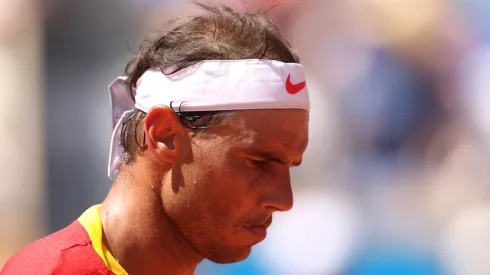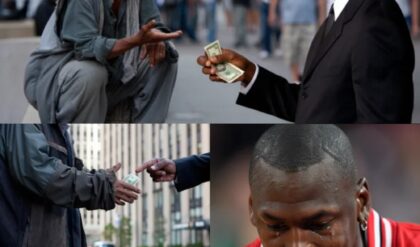Spanish tennis legend Rafael Nadal opened up about the end of his illustrious career, revealing the exact moment he realized he could no longer compete at the highest level.

The tennis world will forever cherish the era of the “Big Three,” featuring Rafael Nadal, Novak Djokovic, and Roger Federer. These three icons dominate the Grand Slam record books, with Nadal mastering clay courts, Djokovic excelling on hard courts, and Federer ruling grass. However, with only Djokovic still active, the legendary trio’s chapter in tennis history is nearing its end.
The most recent to step away was Nadal, the King of Clay and the all-time leader in Roland Garros titles. Speaking on Andy Roddick’s podcast, “Served”, Nadal recounted the moment he accepted that his time on the court was over.
“I was not able to move the way that I was used to moving,” Nadal shared. “So after that Olympics, I came back home and said, ‘OK, it’s over. I feel it.’ Before I didn’t feel it, I wanted to give myself time. After that, I said, ‘OK, it doesn’t make sense anymore. With these issues, I don’t feel like I’ll come back being competitive at the level that motivates me.’ When I felt that, for me, it was over“.
Despite his realization, Nadal continued playing after the 2024 Paris Olympics, with his final official match coming in November 2024. He bid farewell to the sport after a loss to Dutch player Botic van de Zandschulp in the Davis Cup quarterfinals between Spain and the Netherlands.

Rafael Nadal of Team Spain waves to fans following his retirement speech following the quarterfinal tie between Netherlands and Spain during the Davis Cup. (Matt McNulty/Getty Images)
Nadal’s efforts to recover after surgery
Throughout his career, Rafael Nadal battled numerous injuries that potentially cost him even more titles. Following his last surgery in 2023, Nadal worked tirelessly to return to form but ultimately recognized the physical limitations that prevented him from competing at his desired level.
ADVERTISEMENT

SEE ALSO
Rafael Nadal reveals his second-best surface: ‘My game adapted well to all surfaces’
“After the surgery, things went more or less well; we started the recovery process, taking six or seven months,” Nadal explained. “I started practicing, I felt quite well, but the problem is I still had the feeling that I was not able to push, I felt some limitations in that area”.
He added, “So I gave myself time to see if I was able to recover the proper way. In terms of tennis, I still felt good; I still felt competitive. I didn’t feel like I lost speed on the ball. I just needed to recover the physical confidence and remove the limitations”.
The Spaniard admitted these months were particularly challenging. “That’s why all these months had been difficult because, in some way, I felt at some point maybe it’s going to go well, I was able to compete. But I was not able to compete at the level I wanted for different reasons, because I was not playing well, maybe,” Nadal said.
Nadal’s historic clay-court record
While Nadal’s all-surface skills are unquestionable, his dominance on clay remains his defining legacy. In 2010, Nadal etched his name in tennis history by becoming the only player to win all the most prestigious clay-court titles in a single season.
That year, he captured the ATP Masters 1000 titles in Monte Carlo (his sixth), Rome (his fifth), and Madrid (his second). He capped off the season with his fifth Roland Garros crown, cementing his status as the undisputed King of Clay.

